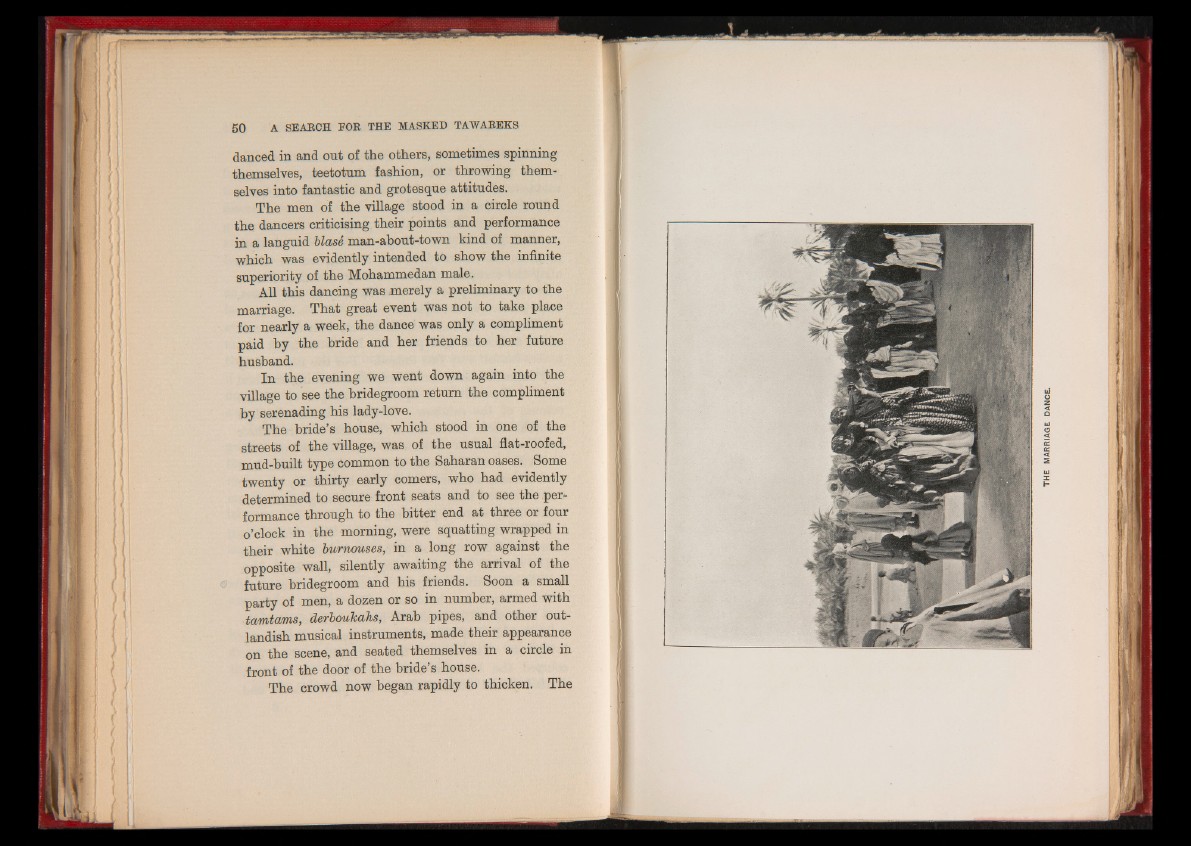
danced in and out of the others, sometimes spinning
themselves, teetotum fashion, or throwing themselves
into fantastic and grotesque attitudes.
The men of the village stood in a circle round
the dancers criticising their points and performance
in a languid blasS man-about-town kind of manner,
which was evidently intended to show the infinite
superiority of the Mohammedan male.
All this dancing was merely a preliminary to the
marriage. That great event was not to take place
for nearly a week, the dance was only a compliment
paid by the bride and her friends to her future
husband.
In the evening we went down again into the
village to see the bridegroom return the compliment
by serenading his lady-love.
The bride’s house, which stood in one of the
streets of the village, was of the usual flat-roofed,
mud-built type common to the Saharan oases. Some
twenty or thirty early comers, who had evidently
determined to secure front seats and to see the performance
through to the bitter end at three or four
o’clock in the morning, were squatting wrapped in
their white burnouses, in a long row against the
opposite wall, silently awaiting the arrival of the
future bridegroom and his friends. Soon a small
party of men, a dozen or so in number, armed with
tamtams, derboukahs, Arab pipes, and other outlandish
musical instruments, made their appearance
on the scene, and seated themselves in a circle in
front of the door of the bride’s house.
The crowd now began rapidly to thicken. The